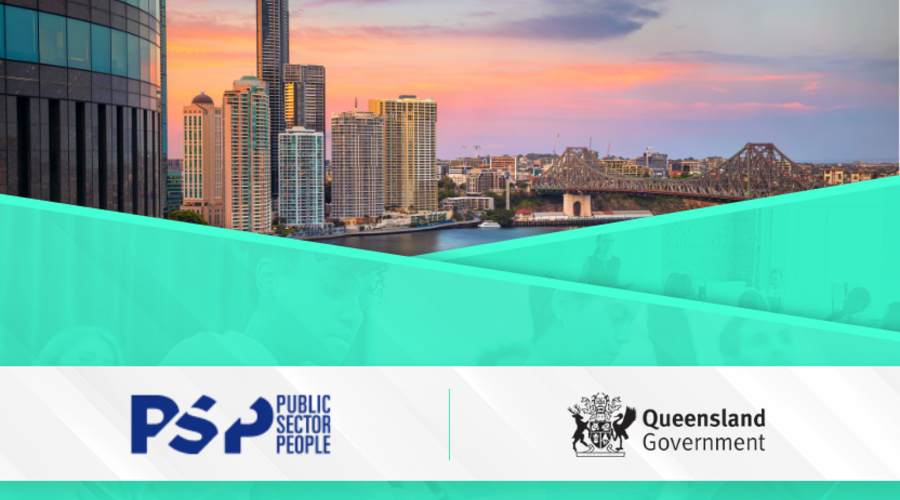How Your Onboarding Process Can Improve Employee Retention

By Emily Harris
Onboarding is often argued as the prime opportunity for employers to win the hearts and minds of new employees. However, organisations can underestimate the importance of onboarding, as they’ve already ‘landed’ their dream candidate. But, an employee’s experiences with an organisation within the first 6 months to a year (which is how long experts believe onboarding to last) will play an integral role in an organisation’s overall productivity levels. The initial interactions a new starter has with the government agency or public sector organisation will colour their future experiences with that government agency and consequently, negative onboarding experiences often contribute significantly to that new starter leaving the new workplace within the year.
According to a study conducted by LMS software Northpass, organisations that invested more time and resources into their onboarding process were able to improve new hire retention by 82% and new hire productivity by 70%[1] (Santaniello, 2019). Despite this, another study conducted by global analytics and advice firm Gallup found that only 12% of respondents felt their company had a strong and extensive onboarding process in place. Furthermore, their research also revealed that 50% of respondents who had a negative onboarding experience, were more likely to leave their organisation within the first 18 months[2] (Gallup, 2019).
Even when reaching out to our network through a Public Sector People survey, more than half of the respondents claimed to have had a negative onboarding experience, citing inadequate training or miscommunication about their job description and expectations as the main cause.
Considering the amount of time, money and effort that’s involved in recruiting new talent, it’s a significant financial loss for organisations to lose that talent within 18 months. Especially in today’s candidate-driven market, where finding and securing talent has become highly competitive for organisations (especially within local and state government) and the strict budgets put in place for different departments, no one wants to incur more costs than they have to. Consequently, investing in an effective onboarding strategy is imperative to a government organisation’s overall growth and development. To ensure organisations within the built environment industry can effectively retain their new talent, HR professionals suggest they focus on three key dimensions of onboarding; organisational, technical and social.
Organisational Onboarding
The first and most common part of the onboarding process is to focus on the operational side of things; the information that is vital to pass on to new employees in order for them to function day-to-day. Organisational onboarding covers things like the layout of the office, the security passes and codes to access necessary information or the office itself and the education of company regulations and policy such as cyber security or workplace health and safety. Language can also play a significant role. Every organisation has its own shorthand or jargon for key processes or functions, which can be very confusing for a new employee and reinforce the feeling of being an outsider. Creating things like a glossary of terms or listing the definitions of key functions within handover notes can help to alleviate any stress a new hire might have about not knowing terms specific to the organisation, perhaps in relation to a specific software they use like or compliance processes unique to the particular government organisation.
Another key component of organisational onboarding is assimilating new hires into the organisation’s culture. This goes further than just telling or listing an organisation’s values to a candidate in an initial meeting. New hires need to be able to inherently understand and integrate the company’s way of doing things into their own behaviour and for this to be achieved values and beliefs need to be regularly reinforced. Ron Carucci, co-founder and Managing Director of the consulting firm Navalent suggests setting out key intervals- three, six, and nine months for example - where leaders can formally engage with new candidates on the organisation’s history and values[3]. Culture can also be demonstrated through an organisation's actions, so things like publicly recognising staff performance, being transparent with upcoming business opportunities and having mentorship programmes where particular employees who ‘embody’ an organisation are able to connect with new hires and share personal stories, are all effective ways for employees to align with the organisation’s values.
Technical Onboarding
Recent studies have found that it typically takes eight months for a newly hired employee to reach full productivity (and potentially more if the employee is entering an entirely new industry)(Ferrazzi, 2015)[4]. Despite an employee possessing the necessary skills and experience for a particular job- which is why they were hired in the first place- figuring out the mechanics of a new role takes time as each government department has its own unique way of doing things. The challenge for managers and supervisors is establishing the most effective ways for new starters to learn and navigate through these unique intricacies so they can then work at full productivity.
Providing new employees with a clear job description that lists key responsibilities and performance indicators is a great start, as it clearly states the deliverables that are expected of new employees and helps them to understand where their autonomy begins and ends. Once expectations are clearly set, managers should also consider any additional training a new employee might require to sufficiently perform their job. For example, is there a unique finance or CRM platform that a new employee will have to use? Or is there a certain knowledge base required for a role that is unique to that organisation? Organising any necessary training in the first few months of onboarding is essential, as employees will have a clean slate, a relatively free schedule and haven’t yet formed ideas or opinions on how things should be done. They are therefore open to new information and can better absorb what they’re being presented with.
It’s also integral through the onboarding progress that managers and leaders take the time to reflect on a new employee’s progress. Allowing for regular reviews with new employees (every fortnight or every month) allows them to better gauge the level of understanding a new employee has in what they’re doing and gives both parties a chance to provide constructive feedback. If certain things aren’t working, new employees have a safe platform to voice this, and by identifying problems early managers can then contribute to developing resolutions.
Review sessions also provide managers with the chance to set short-term goals. Goal-setting is an effective strategy within the onboarding process as it establishes realistic expectations for a new employee and instils an automatic sense of purpose. The first few months at a new job are always overwhelming. You’re constantly being confronted with new things to learn and you can often feel unsure where to start, so having set goals communicated to you provides a clear jumping-off point. Short-term goals can be assigned for three, six or nine months down the track and their progress can be monitored in regular review sessions. Goal setting also makes it easier to discuss any gaps in a new employee’s skillset or identify their growth areas. By achieving these goals, new employees are able to build their confidence and gain a better understanding of how their contribution fits into the larger organisation.
Social Onboarding
While the technical aspects of a job are obvious when onboarding, organisations must also consider the social aspects of a job. How can organisations successfully integrate new hires into their community and foster a sense of belonging? A sense of belonging is important; in a recent Public Sector People survey, 77.36% of respondents felt that a positive workplace culture equated to working together as part of a team, while a separate study by employee engagement platform Tinypulse revealed that employees who cited not feeling connected to or respected by their colleagues were 26% more likely to leave their jobs[5] (Drake, A. 2019). These statistics demonstrate the importance employees place on their workplace relationships; the more isolated they feel, the more likely they are to leave.
To avoid this, it’s crucial for managers to implement strategies within their onboarding process that help new employees to build relationships and rapport with their colleagues. Things like organising scheduled catch-ups with key company stakeholders (superiors, peers, direct reports, clients) can help new employees gain a sense of trust and familiarity with the people they’ll be working with. Ensuring that new employees are also introduced to a setlist of key contacts when they first start to help ‘show them the ropes’ is also a great way to ensure new hires feel less removed from the greater team. Government organisations should also schedule or invite new hires to informal social events to make them feel more welcome- perhaps ask if they want to get lunch within their first few weeks, include them on any invitations to activities the office is involved in outside of work (a fitness challenge, book club etc.). All of these tactics can help new employees feel accepted and build a deeper emotional connection to the company.
Remote Onboarding
Due to the social and physical distancing regulations enforced globally as a result of COVID-19, many organisations were faced with the challenge of transitioning their onboarding processes online for a completely remote experience. While the principles of physical onboarding remain the same, the usual tools and methods used to facilitate onboarding were adapted to an online environment.
A key part of this was implementing new technology platforms; the teleconferencing platform Zoom was downloaded 2.13 million times around the world when the official COVID-19 lockdown was first announced in the UK[6] (Neate, R, 2020). Video chat and conferencing platforms like Zoom, Skype or GoToMeeting allow for the traditional meetings, review sessions and social interactions to still happen between new employees and their team members. Ensuring new hires are properly set up to use any teleconferencing apps and have received adequate training on how to utilise these systems before starting their new role is also imperative in ensuring they can start the onboarding process smoothly.
Another key aspect of onboarding that many organisations have had to adapt is the documents and training involved - can these be transferred to an online medium? E-signature platforms like Docusign can make it easier for employees to fill out and sign forms electronically, cloud-based software like Google Docs and Slack can make it easier for teams to access and store files across the business and project management tools like Asana can help track and monitor a new employee’s progress on set tasks and projects concerning their teammates.
In regards to training, many organisations have created their own online-training modules to ensure new hires feel comfortable and prepared to perform their work tasks to the best of their ability. This has required additional preparation from managers in order to develop an effective program that still covers key criteria for a new starter but is able to do so in an engaging way. This might mean incorporating visual and interactive components and including assessments and online quizzes to help ensure new hires are comprehending their training.
Finally, managers need to consider the social interactions when onboarding remotely, which can be the hardest thing to manufacture through technology. While teleconferencing platforms and instant chat functions can help colleagues feel connected, organisations need to be a little creative in how they apply these tools, to ensure new employees can still build those initial relationships. Some organisations have arranged virtual trivia sessions, virtual happy hours or virtual ‘lunch hangs’ for staff, which have helped newcomers to familiarise themselves with the greater team and gain that initial trust with their colleagues.
Aftercare
Public Sector People understands the importance onboarding plays in the recruitment process; for both the new employee’s future prospects and the overall growth and development of the organisation that’s hired them. This is why when we recruit new candidates, our interaction with that candidate and organisation extends to the first six months of their placement. We want to ensure the best experience for both our candidates and our clients and know that the onboarding process is a key factor in achieving this. Subsequently, we remain in constant contact with both the candidate and client in these initial six months to determine how they’re both finding the experience, establish if there is any constructive feedback to pass on and cooperate closely with the client’s induction and performance review process. This makes sure we are putting the candidate in the best position for ongoing success.
For those looking to expand and develop their team– especially within the public sector – and wanting to find out more about our aftercare process, feel free to contact us at the below:
Melbourne:
Email: info@publicsectorpeople.com.au
Phone: (03) 8535 3111
Sydney:
Email: info@publicsectorpeople.com.au
Phone: (02) 9376 8200
Brisbane:
Email: info@publicsectorpeople.com.au
Phone: (03) 8535 3111
[1] Santaniello, N. (2019) Onboarding Statistics. Northpass. Retrieved from: https://www.northpass.com/blog/onboarding-statistics
[2] Gallup. (2019). Why The Onboarding Experience Is Key For Retention. Gallup. Retrieved from: https://www.gallup.com/workplace/235121/why-onboarding-experience-key-retention.aspx
[3] Carucci, R. (2020) When People Thrive In Organisations. Navalent: Retrieved from: https://www.navalent.com/resources/blog/when-people-thrive-in-organizations/
[4] Ferrazzi, K. (2015). Technology Can Save Onboarding From Itself. Harvard Business Review. Retrieved from: https://hbr.org/2015/03/technology-can-save-onboarding-from-itself
[5] Drake, A. (2019). Why Employees Quit: 60 Statistics Employers Should Know. Learn Hub. Retrieved from: https://learn.g2.com/why-employees-quit
[6] Neate, R. (2020). Zoom Booms As Demand For Video-Conferencing Tech Grows. The Guardian. Retrieved from: https://www.theguardian.com/technology/2020/mar/31/zoom-booms-as-demand-for-video-conferencing-tech-grows-in-coronavirus-outbreak








Job Sectors
All content copyrighted | Privacy Policy | Cookie Policy | T&Cs | Powered with 💙 by Shazamme



